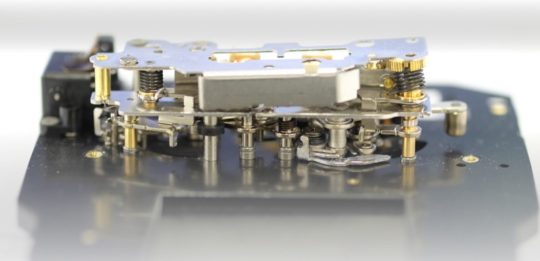Fujifilm GFX Technologies #4 (The Story of GFX Shutter Design) and #5 (Profound Tonality and Deeper Color)

EPISODE 4 – SHUTTER DESIGN
Fujifilm published episode 4 and 5 of their GFX technologies series (epsiode 1 – Sensor / episode 2 – G-mount / epsiode 3 – lenses).
Episode 4 is all about the shutter. Some excerpts:
- The mirror shock is a huge factor that affects image quality. If the camera was created with a mirror, we estimate as much as 30% deterioration in resolution would be inevitable. Mirror shock leaves that much of an impact, especially for a medium format system.
- Although it does not leave as big of an impact as the mirror shock, there is another element that causes shock inside a camera body: a focal plane shutter.
- Our shutter design is actually all about shock absorption.
- shutter unit pieces are not mass-produced during the development phase, so some parts are handmade one by one. This leads to a cost that is 30 times higher than the final product.
- “As much as 30 units were broken before we landed on the final shutter design,” said one designer. “In order to any make claims of 150,000 actuations or weather-resistance to -10°C, we actually needed to put it all to the test and confirm our claims.”
- There are two generations X Series shutter units. The GFX shutter blades are four times bigger than that of the X Series. It also needs to move as fast as 1/4000 sec. The spring tension and shock impact is 10 times bigger as a result.
- Firstly, rigid and tough metal parts are used [because] plastic is [lightweight but] not tough enough for a medium format. Carbon [is light but] is vulnerable to shock and is easy to break.
- There is cushioning material within the shutter unit so that shock will not be transmitted
Read it all at fujifilm-x
EPSIODE 5 – COLOR AND TONALITY

Episode 5 is all about Tonality and Color. Some excerpts:
- The shadow tone is softer for the GFX’s PROVIA and ASTIA than for X Series cameras. A medium format camera is often used in studio with perfect lighting setups. So we had to come up with a way to reflect the subtle changes in the lighting expression.
- The development of ACROS was not easy, but looking back now, it was an easier task than PROVIA and ASTIA, as we started designing from scratch. But just as ACROS proved to be popular among photographers, we knew that the new PROVIA and ASTIA would be welcomed. We had to do this.
- Although we’ve made adjustments to some film simulations, the original idea behind them does not change. We believe these changes would be beneficial for photographers, rather than leaving them confused.
- Images are more robust, so not only photographers benefit from these tweaks, but their editors and printers will also find them beneficial
Read it all at fujifilm-x
Discover what the GFX can really do, by enjoying tons of samples and discussions at out GFX facebook group here. To get GFX tailored news, follow our GFX facebook page.
Fujifilm GFX: USA BHphoto, Adorama, AmazonUS EU: AmazonDE, AmazonUK, WexUK, ParkCamerasUK, PCHstore AUS: CameraPro

